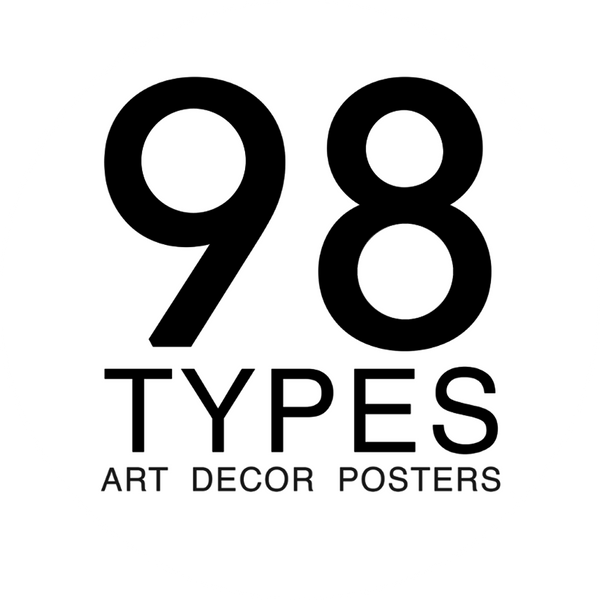Have you ever been really excited about a piece of artwork that you purchased, but then once you hung it on your wall, the look wasn’t quite what you envisioned? You’re not alone! Interior design and home decorating can be really intimidating. The good news is, if you already have an art print that you love – something that speaks to you or simply brings a smile to your face – the hard part of the design process is already over!
Now, you can use that wall art as your anchor point and coordinate any new art and decorations around that piece.
1. When choosing your art prints, size matters a lot.
This is the number one mistake that many people make when purchasing artwork – they always underestimate the size of the poster / art print that is needed to make an impact on their walls. In most cases, unless you’re decorating a small wall space or need to fill an area in an existing gallery (see photo below), whatever size you think you need for a blank wall, it’s usually best to get the next size up.

The size you think you need may seem “big” to you after measuring your space up close, but realize that people aren’t going to be walking up to your walls and staring closely at your artwork. People admire art in passing from several feet away…and from a distance, your beloved art piece can look as small as a postage stamp! Simply put, go bigger and it’ll look better!
2. Pick 2-3 colors from your wall art and use that as your color palette.
If you really want to pull the look of your entire room together (or cozy corner, reading nook, etc.) , you should first visualize and make note of your desired color palette. Ideally, you would already have a personal color preference and go from there...but oftentimes, people don't actually know what color(s) they want in their room. So, one easy way to find your color palette is to choose 2-3 colors from a piece of artwork (or several pieces) that you want to feature in the designated space. This technique is especially helpful if you don't already have a color theme in your room to begin with (it's okay, most people don't). In fact, the simplest way to decorate a room is to base the color palette from a single piece of artwork, and then obtain home accessories in complementary colors.
When first designing a room, most people choose neutral colored furniture (brown, gray and ivory tones) because those are the safest color choices. That is a great starting point, because then, once you decide on the basis of your color palette, all you need to do is simply add a few accent pieces (such as pillows, throw blankets, etc.) to amplify the look of your living space.
Next...to really elevate the room, instead of choosing a plain, neutral colored sofa, let's have fun and choose one in the same color family of the blue dress in the artwork. Keep in mind, a sky blue sofa is unique and unexpected, but as an alternative, adding blue throw pillows to a neutral colored sofa works just as well. Finally, to match the vintage red-orange lettering in the artwork, adding a rust-toned throw pillow with an interesting texture and tassels would really be the cherry on top!

3. Focus on color, but don’t forget about style, mood and theme.
It’s easy to find complementary colors, but it’s a bit harder to nail down your style preference and how you want someone to FEEL when they enter a room. Do this by thinking of key words that pop into your head when you visualize Hogsmeade village (for the “muggles” out there, this artwork is inspired by the fictional universe from the Harry Potter book series). In this case, the key words are: “cozy” (hence, the throw blanket and iron candle holders), “rustic” (wooden deer head & antler lamp) and tavern (coffee table that looks like an oak barrel…evoking feelings of “The Three Broomsticks” tavern).
Bonus Tip: Choose the Right Type of Picture Frame
Whenever I get my artwork professionally framed, most framers will try to push me to get a frame with wide borders. This is another common mistake many people make with artwork, because they automatically think: the bigger the frame width, the more it will highlight their poster print, right? Wrong! In most cases - unless you're going for a very specific Rococo / Baroque style - choosing a border width that's more than 1" inch wide (for artwork 24x36" inches or smaller) is overkill.
A frame that's too wide may steal attention away from your art print and can even cheapen the look of your wall art. Are there exceptions? Yes, of course! Especially if your artwork has a lot of space around it, or if you're getting it matted. But, for simplicity sake - this is an easy rule to follow.

To achieve the same look of the vintage-inspired poster prints as seen on WindowShopGal, the simplest choice that will fit almost any decor is a black wooden frame with a matte finish, flat / clean lines, and a border width of 1" inch or less.*** This look is effortless, timeless and elegant, and pairs especially well with retro-style posters.







